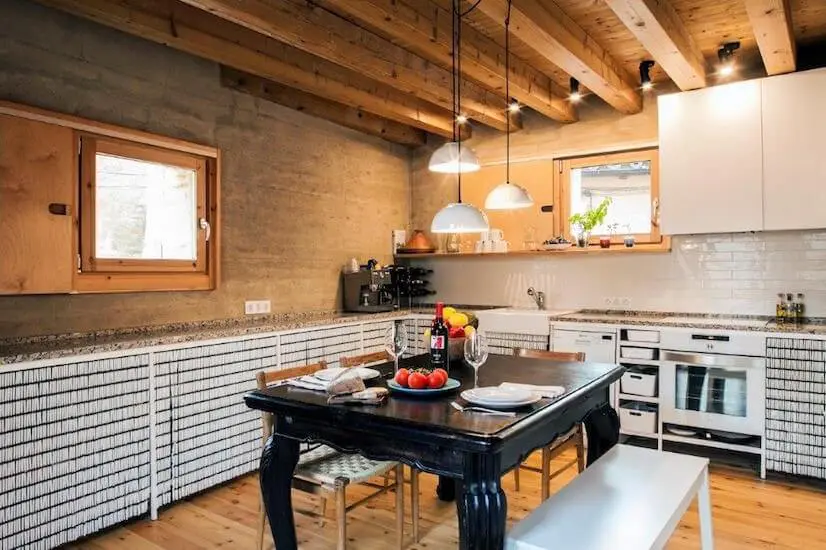
Rammed earth is a building material that has been used for many civilizations since ancient times. Its evidence of usage can be traced as far back as the Neolithic Period.
It is made by compacting certain soils and is said to be the most durable of the earth-building forms. One of the finest examples of rammed earth construction is the Great Wall of China.
This ancient technique was started being used around the mid-1970s when sustainable building techniques were being promoted widely. At that time, it was considered an inexpensive wall system. The soil was mostly sourced on-site and the architecture was linear, so unskilled labor could be used for most of the work.

Over the past few decades, rammed earth gained tremendous popularity in the industry. However, with the advancement of technology and the involvement of professional builders, rammed earth became more complex as well. Here, we will discuss whether or not it is expensive to build a modern house using rammed earth.
What is Rammed Earth?
Rammed earth is a construction technique that involves compacting a damp mixture of soil with correct proportions of clay, sand, gravel, and sometimes cement as a stabilizing material. This mixture is then placed in formwork or temporary frame for the durable and well-braced wall. It is then compacted about half of its original height.

In modern rammed earth buildings, the walls are constructed on top of the footings or a reinforced concrete slab base. The thickness of rammed earth walls varies widely based on different regions and their building codes. It can be as thin as 6 inches for non-load-bearing walls or as thick as 24 inches for load-bearing walls.
Pros of Rammed Earth:
Insulation:
Due to the thickness of rammed earth walls, they are perfect for insulation. This further helps in energy retention as the walls retain heat during the day and slowly release it at night.
Durable:
It is a well-known fact that structures made from rammed earth can withstand over decades, if not centuries. Archaeological evidence suggests that some structures could last for more than a thousand years.

Fire Resistant:
Without the use of any fire-resistant products, rammed earth naturally has a four-hour fire resistance, when contractors use today’s best practices and methods. It gives the occupants of the buildings more time to get out of the building when an emergency arises.
Moisture Resistance:
Homes built using rammed earth are the most suitable in regions where a significant amount of precipitation every year. A majority of soil compositions using this technique don’t require additional waterproofing as it can naturally provide a superior level of moisture resistance.

Soundproofing:
Due to the density of rammed earth walls, they are highly soundproof. This helps well in canceling out outdoor noise when built in a crowded area. The soundproofing works even better if the house has multiple interior walls using the same technique.
Pest Protection:
Rammed earth walls allow absolutely no cavities in the walls where pests can reside or find a way to the interior structures. It is not necessary to repaint, plaster, or install wallpapers in these walls since it rarely requires any reinforcement. Once it cures, it is practically impossible for most pests to penetrate it.
Why is Rammed Earth More Expensive than before?
During the 1970s when rammed earth was on the rise, it was still considered a cheap building material. Simple buildings and unskilled labor cut down additional costs involved in building a house. However, as technology grew, the cost of installing rammed earth also rose.

It is almost unbelievable that a technique that uses raw materials has evolved into an expensive finished product. It is because this simple structure that reflected the unpredictability of raw earth gradually became more complex. To reach the level of perfection, highly skilled laborers, processed aggregates, color blending, and other advanced techniques started being used.
The cost
Including the main raw materials, other extra materials, as well as labor costs, the price of a typical rammed earth wall ranges from 5,500 to 7,500 rupees. On average, the cost is about 5-10% more than a custom stick-built house of the same interior quality. The cost of rammed earth also varies based on the technologies used. A simple structure built using rammed earth commonly does not require reinforcements but complex structures do.

Although it is slightly more expensive than normal homes, it decreases the carbon footprint of the home you live in. Moreover, once you factor in the life-cycle costs, reduced energy usage, less need for maintenance, and so on, rammed earth homes cost less than conventional homes in the long term.





